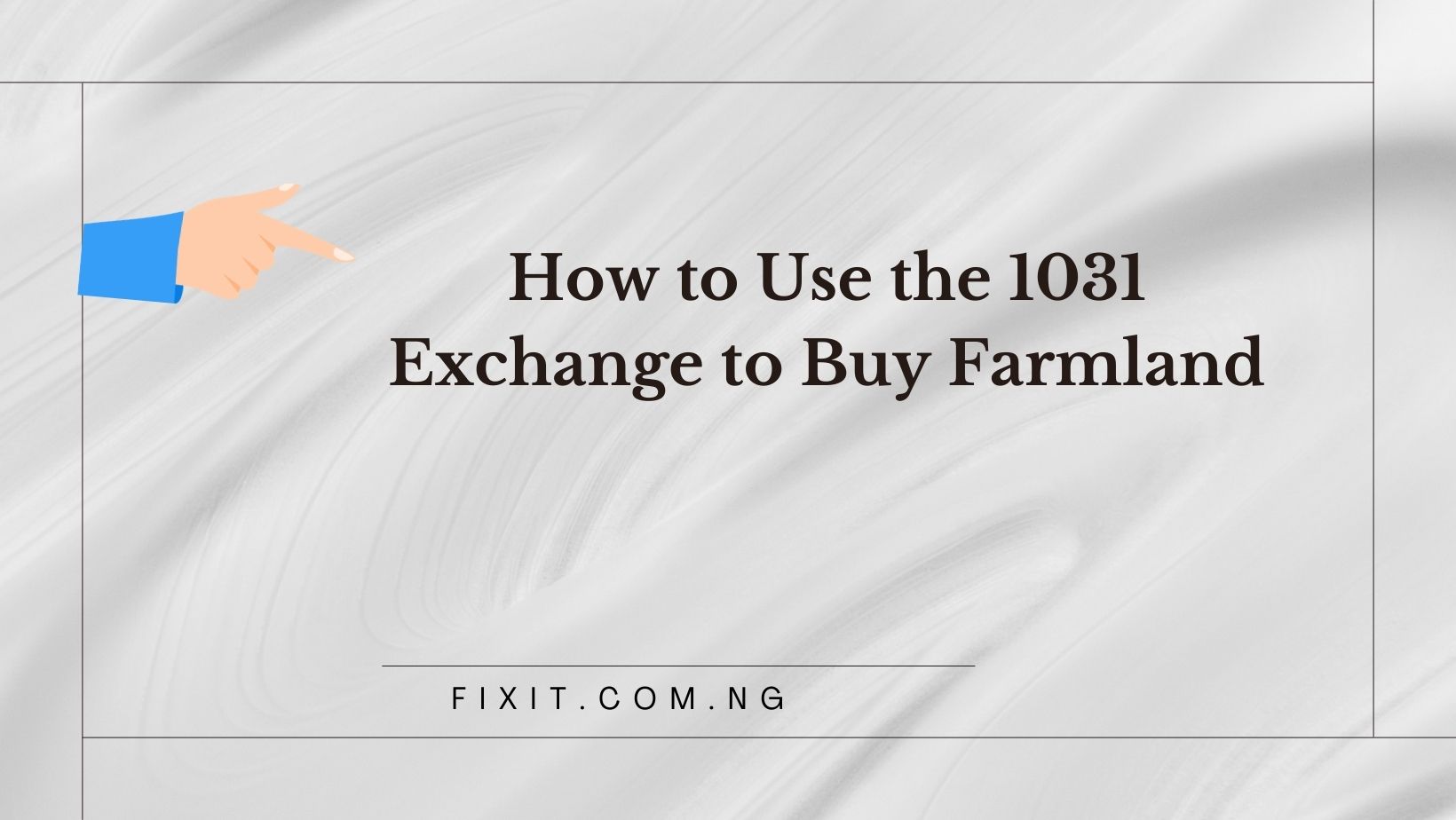Using the 1031 Exchange to Buy Farmland – Section 1031 of the Internal Revenue Code allows individuals to exchange real property held for investment or business use without incurring tax gains, without having to recognize a taxable gain on any transaction. Replacement properties must be of equal kind – providing investors with more options when swapping out farmland for ranch land or rental homes for apartments.
Like-Kind Property
By engaging in a 1031 exchange, you can sell real property and use its proceeds to purchase another piece without incurring capital gains tax. In order to qualify, however, your replacement property must be “like kind” to what was sold and must also be used for business or investment purposes; otherwise you will owe capital gains taxes upon selling.
“Like kind” can refer to various asset classes; not just real or personal property. Additionally, they don’t even need to be located within one state but simply within the United States.
For a 1031 exchange to meet its requirements, you must use a qualified intermediary and adhere to strict timetables. From the sale date of your relinquished property until completion of an exchange (180 days from that point forward and 45 days to identify potential replacement properties), both must occur. Furthermore, neither you nor anyone acting on your behalf should receive actual or constructive receipt of sale proceeds or keep funds escrowed – typically, one exchange cannot surpass three properties.
Leasehold Interest
Internal Revenue Code Section 1031 allows landowners to defer capital gains taxes when trading investment properties for similar ones, known as 1031 exchanges. These tax-deferred transactions enable farmers to increase cash flow and build their portfolio without immediate capital gains taxes being assessed against them.
Investors typically associate like-kind property with farms; however, the term is also applied to any interest in real estate such as bare land, buildings and improvements, rental properties, condominiums, warehouses, retail stores, apartments duplexes as well as longer leasehold interests of over 30 years and mineral rights. Individuals can even exchange their personal residences for commercial or investment property (though those proceeds could be subject to either a $250,000 or $500,000 exclusion depending on how their taxes are filed).
Investors may engage in mixed use 1031 exchanges, where part of the replacement property will be used for residential purposes. However, this type of exchange requires expert professional assistance at virtually every step to avoid missing key deadlines and identify suitable replacement properties within 45 days after selling their relinquished property. Furthermore, investors should have their purchase funds held escrowed until all steps of the exchange process have been successfully completed.
Mineral Rights
Mineral owners looking to sell their rights may be eligible to utilize section 1031 of the Internal Revenue Code in order to defer capital gains taxes when exchanging “like-kind” property for another investment, thus deferring capital gains tax liabilities. A qualified intermediary must facilitate this exchange. Furthermore, strict timelines must be observed. For instance, 45 days must elapse between relinquishing their property and identifying possible replacement investments and 180 days allowed before closing on new investments by the IRS.
Investors frequently employ 1031 exchanges to invest in gas and oil royalty interests, as they don’t attract the same taxes as real estate investments; instead, their taxes are levied monthly like income taxes are. This tax deferment makes these investments highly appealing.
An essential factor to bear in mind when conducting a 1031 exchange is that only like-kind property can qualify. This includes bare land, commercial real estate, industrial buildings, residential and duplexes as well as leasehold interests that exceed 30 years as well as certain water rights. Farmers typically opt to exchange into minerals or royalties as this allows them to reduce capital gains taxes significantly – this option especially helps them preserve wealth for future generations.
The Simultaneous Exchange
An IRS 1031 exchange allows taxpayers to exchange like-kind investments, without paying capital gains tax, while meeting specific criteria to complete it successfully. A qualified intermediary, being aware of 45 and 180 day timelines and consulting with experienced attorneys, real estate brokers and tax specialists are essential parts of making it work successfully.
Another consideration is that all property deeds for relinquished and replacement properties must pass in an arm’s length transaction, meaning the parties cannot be related (with exceptions such as limited liability companies or trusts). This also applies to disregarded entities such as single member LLCs or revocable living trusts that might otherwise qualify as being disregarded entities.
If the replacement property you buy includes a mortgage, this counts as cash boot and must be reported as such to the IRS when sold. Also applicable if using personal or non-like-kind property in exchange.
1031 exchanges can be an excellent way for investors to add value to their portfolio, but they may not be suitable for everyone. Take the time to evaluate your financial goals, investment strategy and risk tolerance in order to determine whether a 1031 exchange is your ideal solution; otherwise there are other options such as reverse exchange or improvement exchange that could provide greater flexibility for you.

